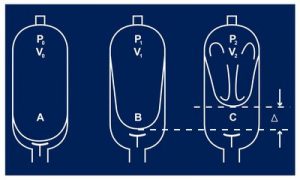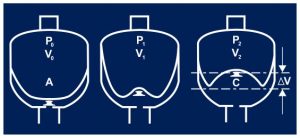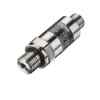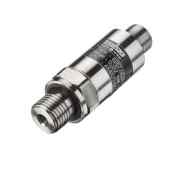Parker Hydraulic accumulators - General
- 96.42% Has a good to very good experience with SENSORS.NL
- Personalized customer service
- Spacious assortment with a wide range of top brands
- Need an additional discount for quantities? Please contact us
Hydraulic accumulators are an essential component for optimal operation of a hydraulic circuit. In hydraulic circuits, the accumulator enables the following:
Applications:
- Energy storage: conserves energy without loss and redistributes as needed, reducing installed power.
- Pressure compensation: absorbs pressure spikes from pumps or other components to control pressures and flow rates in a hydraulic circuit.
- Volume control: absorbs variations in fluid volume caused by temperature changes in a closed hydraulic circuit and maintains a nominal pressure.
- Maintains fluid flow rate: an accumulator can maintain fluid flow in case of pump failure and can also be used as a mobile pressurized fluid reserve.
- Emergency energy storage: if the main energy source fails, an accumulator can provide enough energy to complete an operation or complete a full hydraulic cycle.
- Prevents mixing of liquids: transfer of energy from one fluid to another without risk of mixing.
- Shock absorber: Suppresses shock and vibration in hydraulic systems of lifting vehicles (e.g., forklifts).
Models:
EHV - series: accumulators for high pressure. Forged body without welding. Anti-extrusion valve on liquid side. Sturdy nitrogen loading valve. Fully removable battery for overhaul and replacement of damaged parts.
EBV - serie: low-pressure bladder accumulators. Forged body without welding. Liquid side window. Sturdy nitrogen loading valve. Fully removable battery for overhaul and replacement of damaged parts.
ELM - series: membrane accumulators with vulcanized metal anti-extrusion plate. welded steel housing. Hex screw for nitrogen charging. NON-repairable batteries. in case of damage they must be replaced.
EHP - series: Flange piston accumulators on gas side. Unwelded, drilled and ground tube. Aluminum piston. Nitrogen loading valve. Fully removable battery for overhaul and replacement of damaged parts.
BLADDER ACCUMULATOR DIAPHRAGM ACCUMULATOR PISTON ACCUMULATOR



Operation:
In 1938, Olaer invented and built the hydropneumatic pocket-type accumulators (licensed Mercier-Greer). From there until its entry into the large Parker family in 2013, it remained a leader in the construction and supply of accumulators. The sizing of pocket accumulators is based on Mariotte's law, which takes into account the important difference in compressibility between a gas and a liquid. Hydraulic accumulators are basically divided into three types. Pocket, diaphragm, piston accumulators. In bag and diaphragm accumulators, they are blocked in the body and inflated with nitrogen at a pressure determined depending on the work to be performed and the application. In piston accumulators, the separation of gas (nitrogen) and liquid is carried out by means of a floating piston.
| Weight | 1 kg |
|---|---|
| Brand | Parker |








